AI and the Data Science Job Market: What the Hell Is Actually Happening?
What aspiring, junior, and senior data scientists should know to stay future-proof
Lately, there’s been a lot of noise around social media claiming Data Science is “dead”.
But this isn’t the first time we’ve heard it.
Every couple of years or so, the same narrative makes the rounds. A new tool comes out, job titles shift, and suddenly, people are ready to bury Data Science.
But what’s different this time is that the concern isn’t just coming from a few isolated corners of the field.
This time, we’re seeing a real disruption that cuts across tech and even beyond, with layoffs, fewer entry-level postings, and AI hype everywhere you look.
I want to address these concerns with actual research and bring some clarity to those of you asking questions like:
Is it even worth becoming a data scientist?
How do I stay competitive as an experienced Data Scientist?
Should I be afraid of losing my job to AI?
I’ll keep it honest as always and call things for what they are (no B.S.), and at the end, I’ll do my best to give you practical advice to help you thrive during this transition.
Here’s what we’ll cover
The real impact of AI adoption on junior and senior roles.
What employers are hiring for right now, and how fast demand is growing.
The irreplaceable skills no one is talking about
My practical advice for aspiring, junior, and senior data scientists
📌 At the end of the article, I’ll also include a special announcement that I think will be very relevant to you.
What the data shows (Harvard study)
Here’s what a recent Harvard study found after tracking almost 285,000 U.S. companies: when companies adopt generative AI, junior roles stop growing, while senior roles keep climbing.
At first glance, it might sound like “AI is killing jobs.” But the story is different.
The study shows that companies aren’t necessarily laying off juniors. What’s really happening is a slowdown in entry-level hiring, while senior roles continue to grow. In other words, the door into many companies is narrower, not closed.
💡 Think of it this way: the routine tasks that used to justify hiring more juniors (cleaning data, drafting documents, writing simple code) are now handled more efficiently with AI. That means fewer new hires. But for those already inside, opportunities haven’t disappeared, and promotions for juniors actually went up.
This explains why breaking into Data Science feels harder right now. The ladder is still there, just steeper than before.
I currently work at a company that’s been fast at adopting AI, and my experience so far very much aligns with this. AI is taking over the grunt work and freeing me up to focus on higher-value tasks.
Generative AI skills: The new baseline
We’ve seen that entry-level opportunities are shrinking while experienced roles keep growing. The next question is: what skills are companies prioritizing as they make those hires?
Lightcast recently looked into this and found that from May 2024 to May 2025, the top postings referencing Generative AI were for Data Scientists (3,301 unique postings) and Machine Learning Engineers (2,951):
This makes one thing obvious: companies aren’t saying they don’t need data talent. They’re saying they need data talent that knows AI.
And the demand for AI as a skill is growing even faster than the demand for AI job titles.
Postings requiring Generative AI skills jumped from just 55 in 2021 to nearly 10,000 by mid-2025.
Skills are outpacing titles because organizations want people who can actually use these tools, not just carry a label on their CV.
💡 I’ve talked about this before in other articles, but “Generative AI skills” doesn’t mean the same thing for everyone. What it look like depends on your level of experience and the company. But across the board, the expectation is clear: you need to know how to leverage these tools in your work.
The Irreplaceable skills no one is talking about
Learning how to use Generative AI is no longer optional. But here’s the mistake many people make: they think AI skills alone are enough.
The truth is that the skills that make you resilient in this market are the ones AI can’t replace. Things like:
Business impact: showing how your work connects to revenue, retention, or efficiency.
Domain knowledge: understanding the industry you’re working in and the context behind the data.
Stakeholder management: building trust and alignment so that your insights actually get used.
Communication and data storytelling: translating analysis into decisions that move the business forward.
These skills are about judgment and influence, not just execution. And no matter how good AI tools get, they can’t replicate that.
💡 If you want to stay valuable, combine technical proficiency with these human skills. That mix is what makes you more than just someone who can query data, it makes you someone who can drive outcomes.
What should you do next?
The takeaway is simple: AI isn’t replacing data professionals, it’s reshaping what makes them valuable.
🎓 Aspiring data scientists
If you’re trying to break in, your projects are everything. But it’s not enough to just show technical skills, you need to show that you understand business impact.
Focus on:
Choose the right projects: pick ones that clearly connect analytics to outcomes (growth, savings, efficiency, retention).
Leverage AI tools: use them to speed up your work and make it more efficient.
Frame your work around impact: every project should answer “why does this matter to the business?”
💡 Projects that demonstrate business impact are what will set you apart in a crowded market. I recently wrote an entire guide on how to build competitive data science portfolio.
👩💻 Juniors
If you’re already in, this is not the time to leave your job. It’s the best time to grow where you are, prove your value, and climb the ladder from inside.. Focus on two things:
Do more with less: use AI to be more efficient and make your work visible
Develop soft skills: business impact, communication, stakeholder management, and data storytelling.
💼 Mid-career & senior data scientists
This is a great period for you (especially if you are a senior). You have lots of opportunities on the table, but staying competitive will depend on how quickly you adapt. Focus on:
Efficiency: use AI to make your own work and your team’s work more impactful
Adoption: guide how your company implements AI in practice
Leadership: set the standard by showing how AI can drive business outcomes
🚀 Future-proofing your career
Data Science isn’t dead. It’s evolving, and the shift is already here.
This is why, over the past couple of months, I’ve been building AI systems that have helped me streamline my workflows, from exploratory analysis to reporting, and even a full-on AI agent that helps stakeholders at my company “talk to our data“.
And to help others accomplish the same, I’m launching Future-proof DS.
Future-proof DS is a cohort-based program that teaches you how to use AI to become indispensable at your company, more competitive in the job market, and 10x more effective in your work.
Enrollment for the October 2025 cohort is now open:
A couple of other great resources:
🤖 Struggling to keep up with AI/ML? Neural Pulse is a 5-minute, human-curated newsletter delivering the best in AI, ML, and data science.
🤝 Want to connect? Let’s connect on LinkedIn, I share lots of career bite-sized advice every week.
Thank you for reading! I hope this guide helps you better navigate the job market. Don’t forget to join the waitlist for the “Future-proof DS“ course
See you next week!
- Andres
Before you go, please hit the like ❤️ button at the bottom of this email to help support me. It truly makes a difference!


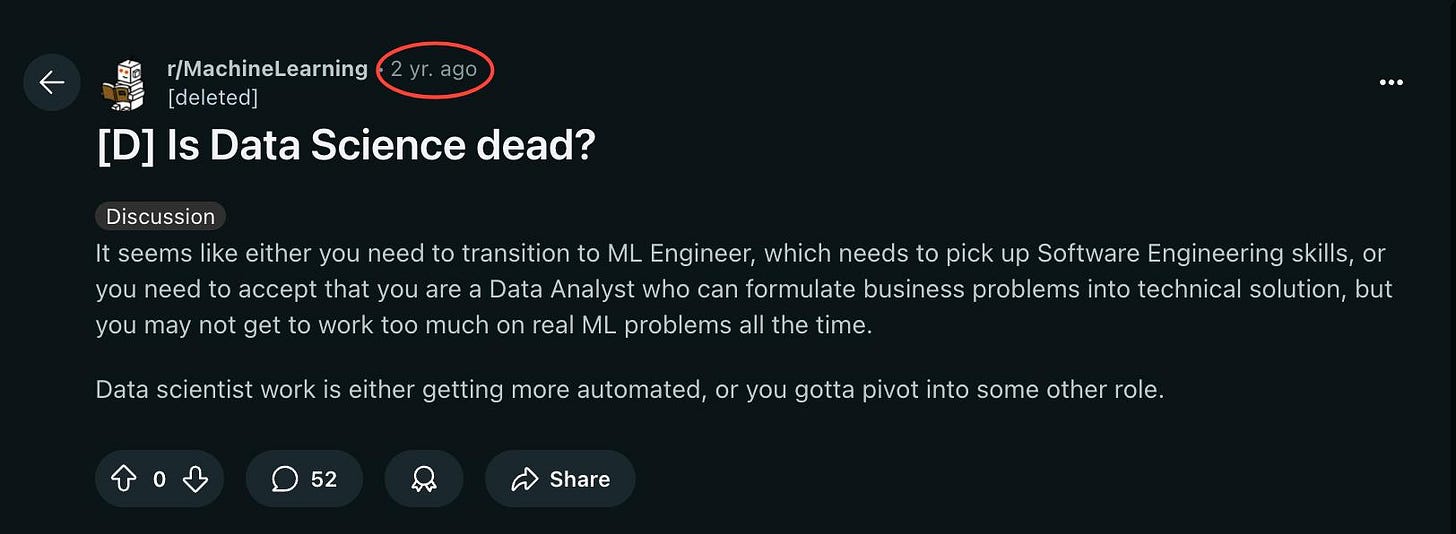
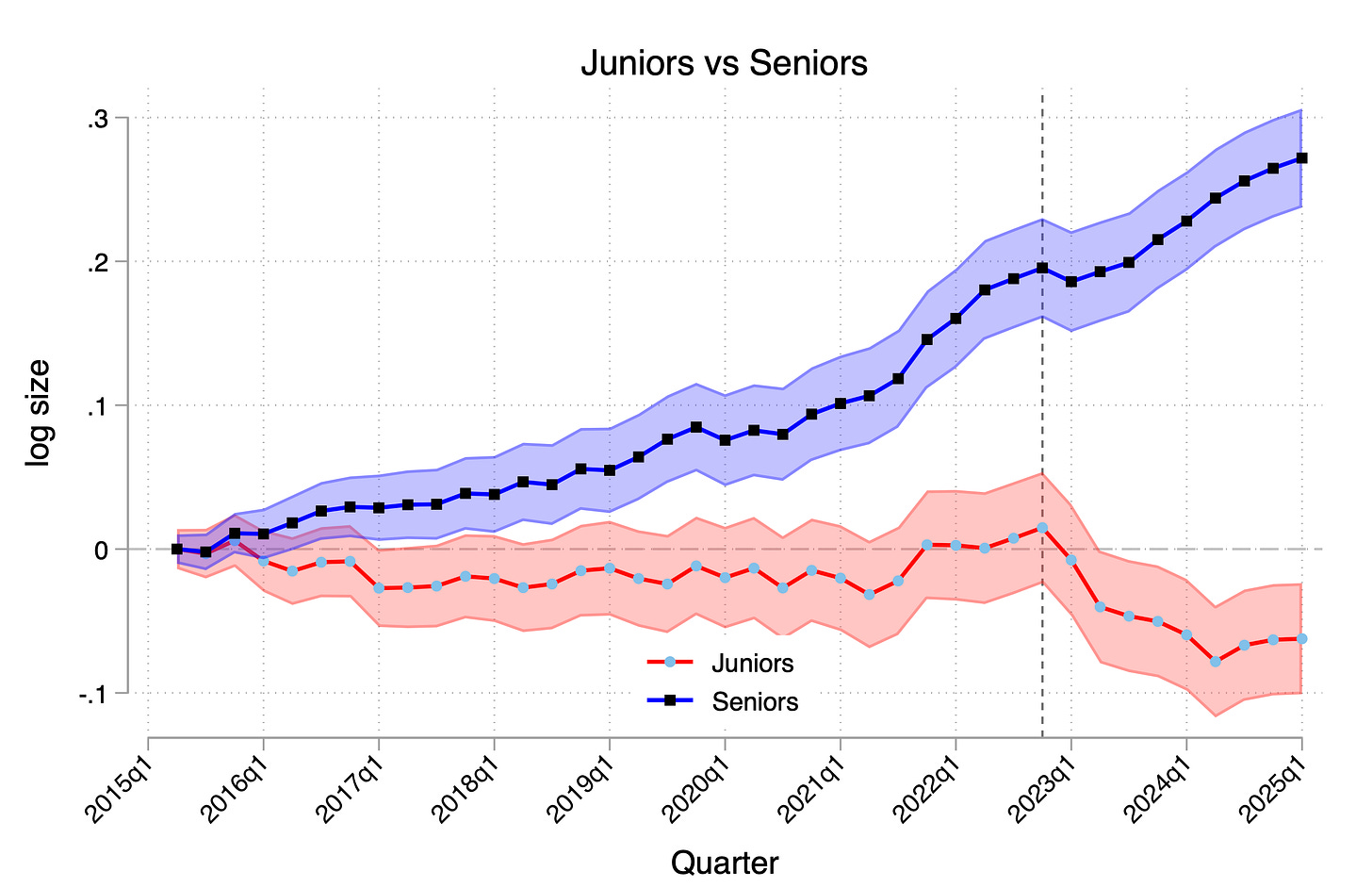
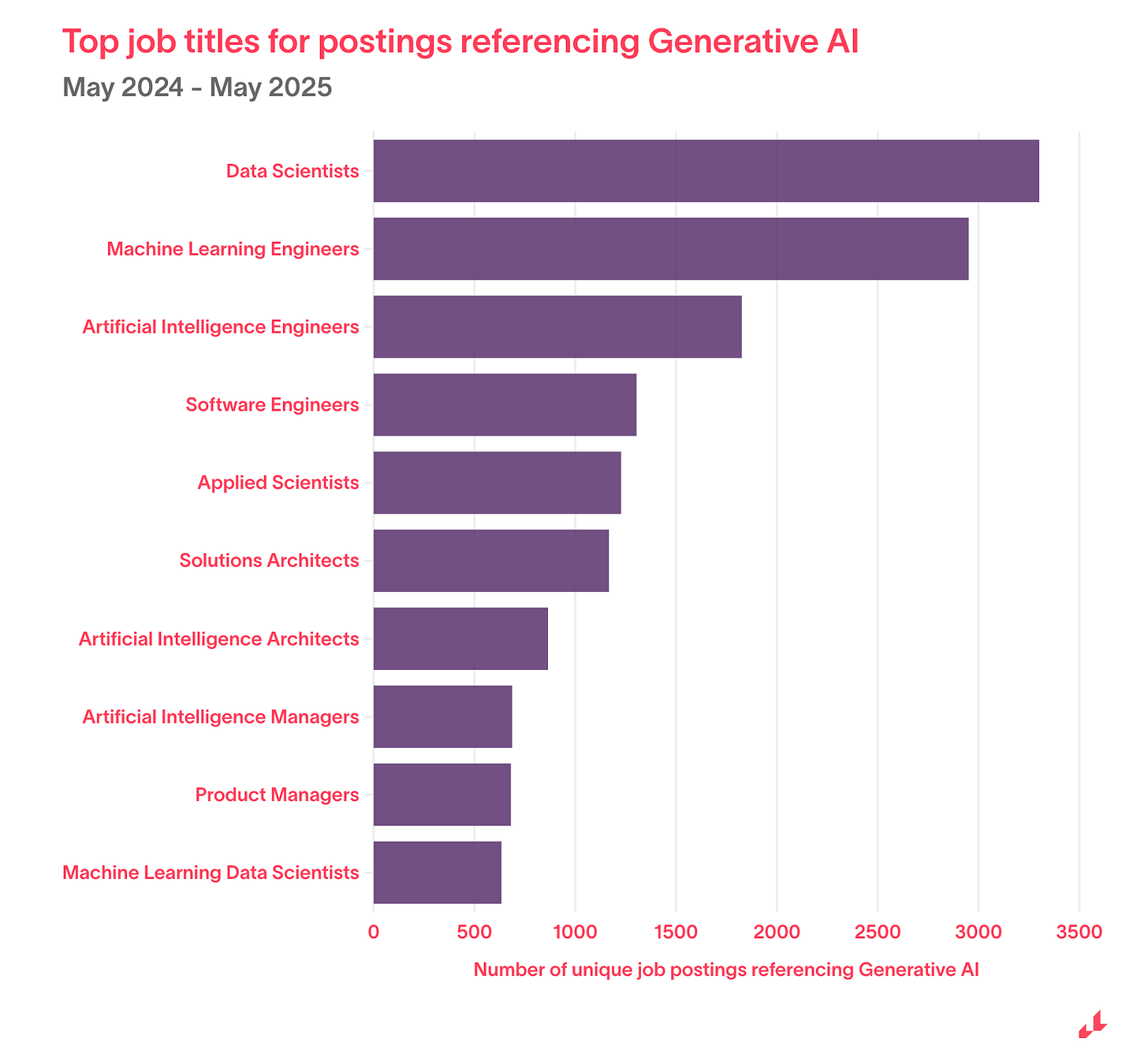
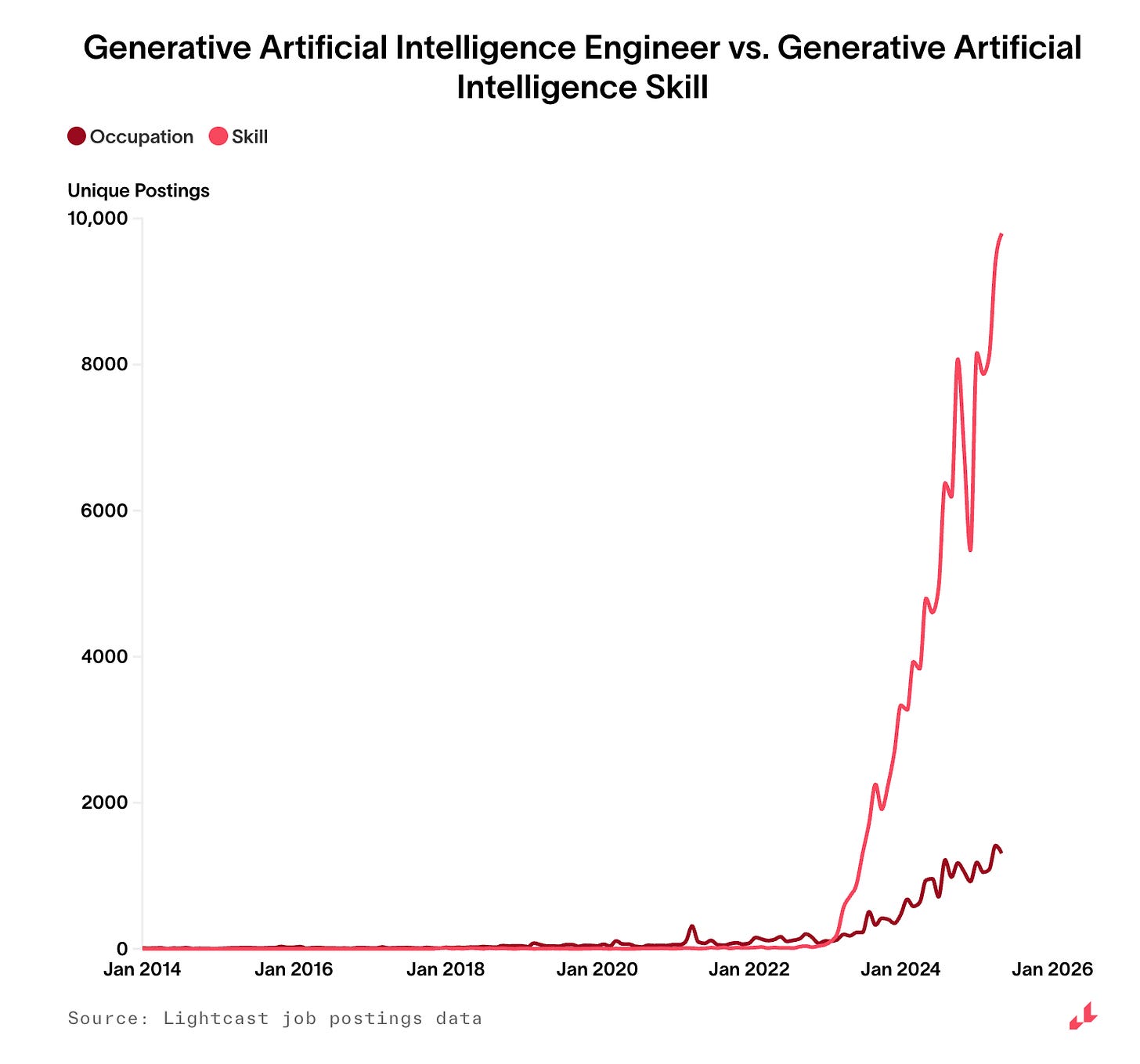

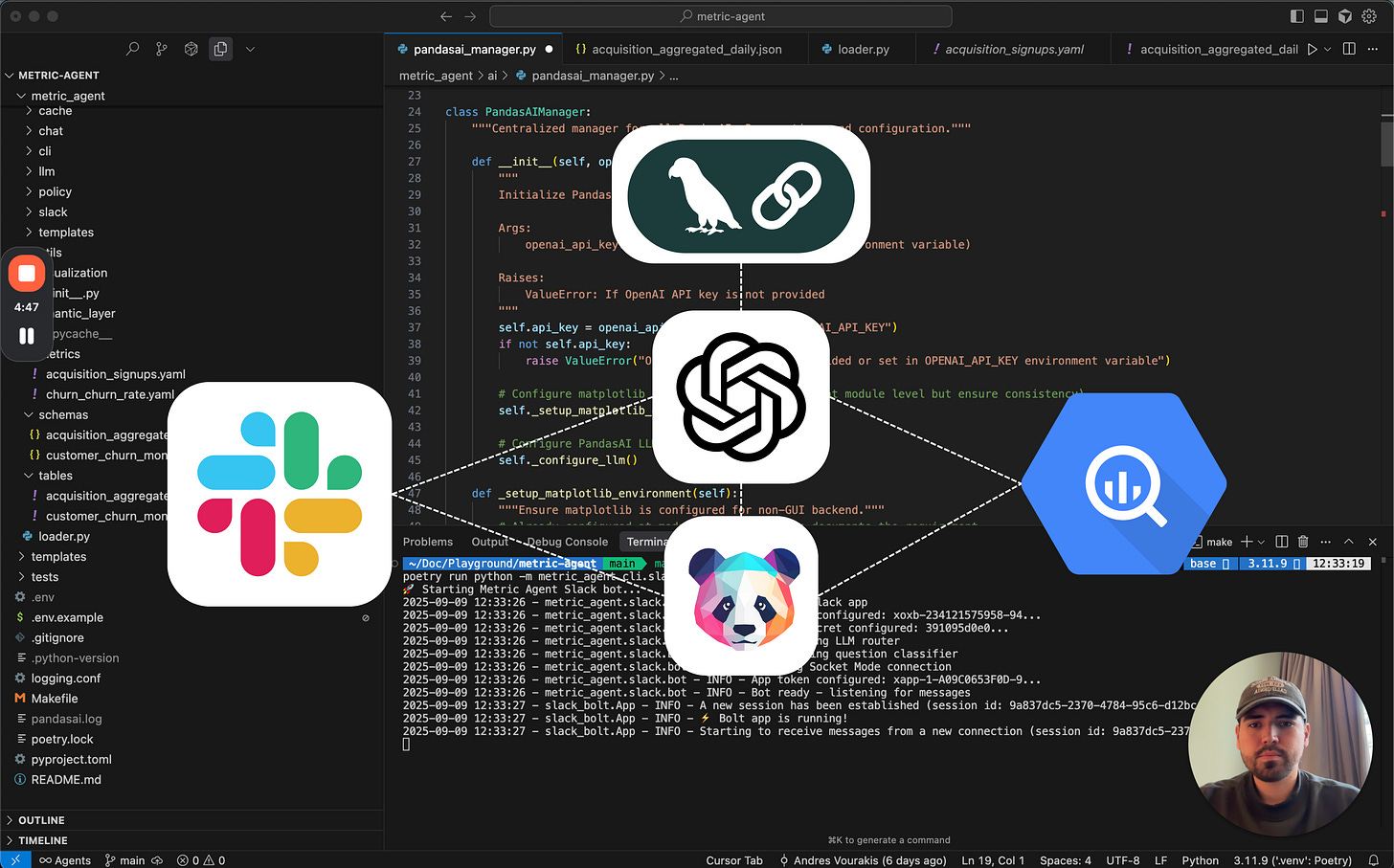
This is so true, and thank you for sharing your perspective. Being new and navigating things myself, I also feel it’s crucial to build strong soft skills, deepen domain knowledge, and then leverage AI to ship things quickly. That way, people can focus their energy on driving impact and business value while AI handles the efficiency side.
I’m also very curious to hear more about your approach to how you were able to build agents that automate the workflow from data exploration to reporting. I’m working on something similar and would love to learn from your experience.